
2024 Wedding Food Trends: Catering and menu styles
Find the latest wedding food trends for 2024. 💍 From decorations to menus, get ready for an unforgettable event! ✨🍾
Day of the Dead, also known as Hanal Pixán, is a celebration that pays tribute to loved ones who have passed away. While it has a commemorative nature, it’s also a great excuse to enjoy a wide variety of traditional dishes.
You see, the typical Day of the Dead food is much more than just a culinary expression; it’s a powerful representation of rich Mexican tradition and culture.
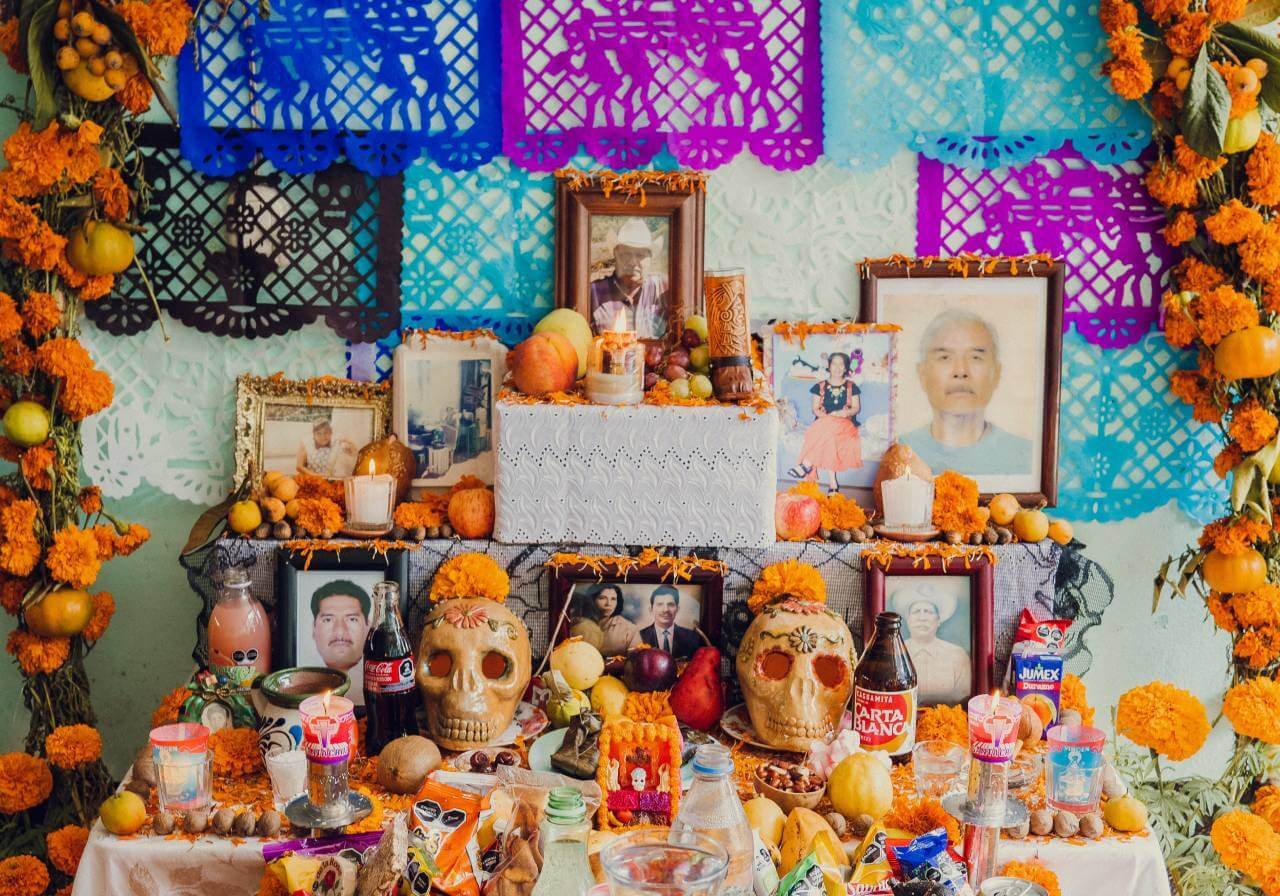
So, in this article, we invite you to explore the flavors and meanings behind the 10 most popular dishes that adorn tables and altars during this festival. If you’re ready, let’s get started!
While tamales accompany us at various times of the year, many claim that they are enjoyed most during the Day of the Dead. For many families, they are essential on the altars of the departed and on their tables to celebrate.
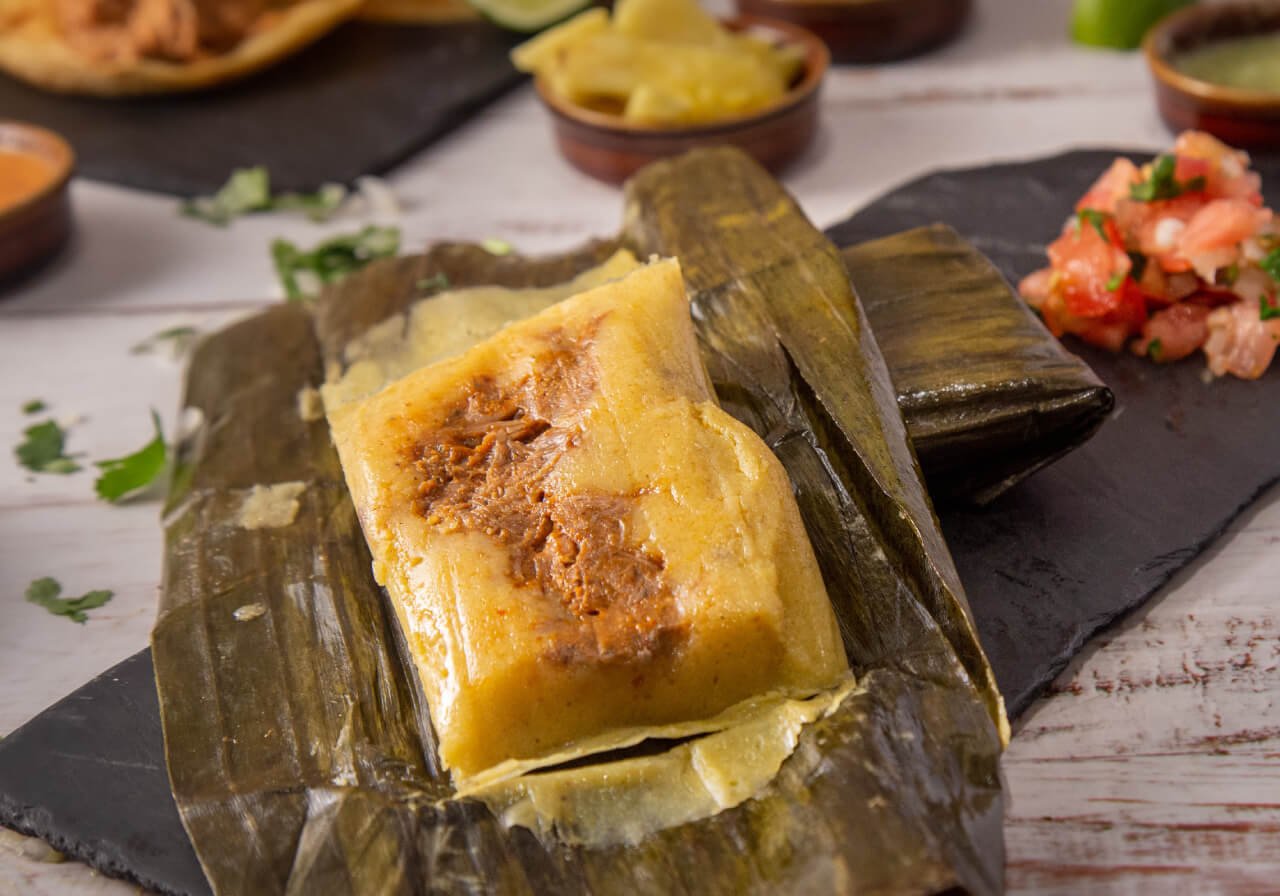
Made from corn, a millennium-old staple that we still enjoy today, what makes tamales special is their variety. You can find them filled with meat, beans, chilies, or sweets, wrapped in corn husks, or even plantain leaves.
You get to choose which one delights your palate!
If you find yourself in the beautiful regions of Yucatán, you’re likely to come across Mucbipollo or Mukbil Pollo. This dish has its origins in Mayan culture and is considered a star dish to celebrate Hanal Pixán, as the Day of the Dead is known in the Mayan world.
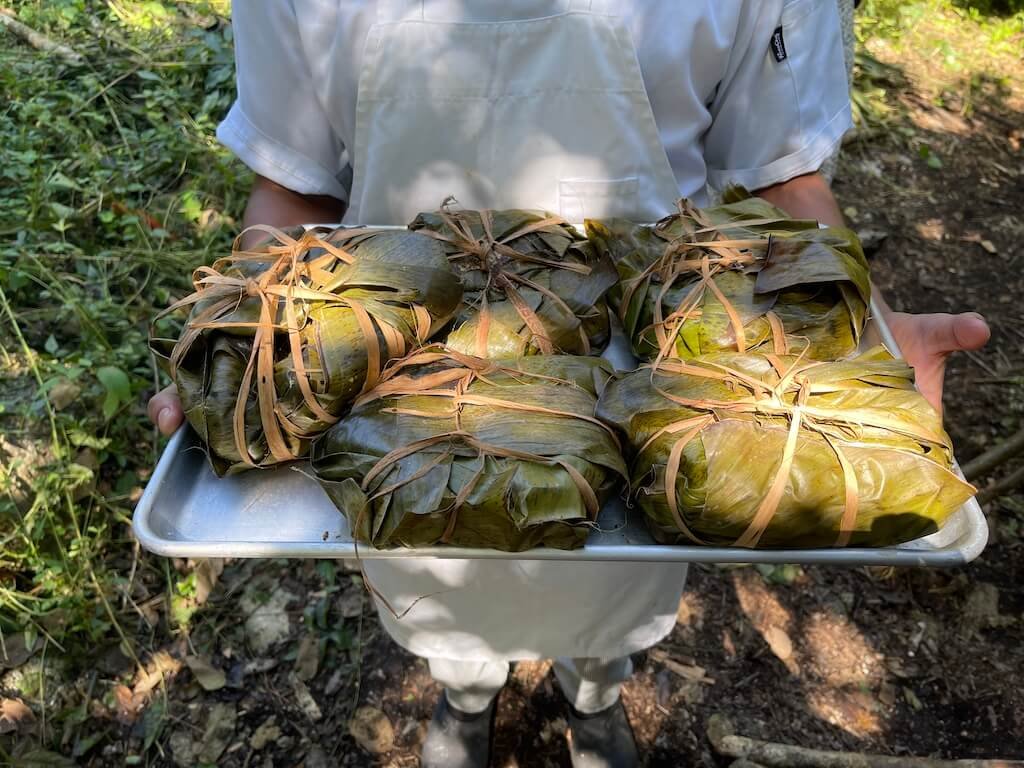
While it’s essentially a tamal, it’s much more special. It’s larger than the regular tamales, and what makes it unique is that it’s cooked underground.
You can find it filled with chicken, turkey, pork, or beef, mixed with Kol, a thick sauce in which the meat and achiote are cooked.
Sweet Pumpkin, also known as “Calabaza en Tacha” in Yucatán, rather than a typical Day of the Dead food, is more of a traditional dessert that you’ll commonly see on altars placed in clay jars.
It’s known for its sweet taste and uses regional ingredients like piloncillo, cinnamon, guava, and, of course, pumpkin. When all these ingredients are cooked in a pot, you get a delicious syrup that pleases both kids and adults.
As its name suggests, Pan de Muerto is one of the most iconic elements of this celebration, and you can find it long before the festival begins. Whether you’re looking for sugar-coated, sesame-covered, or filled versions, you’ll likely find them in small local shops and restaurants alike.
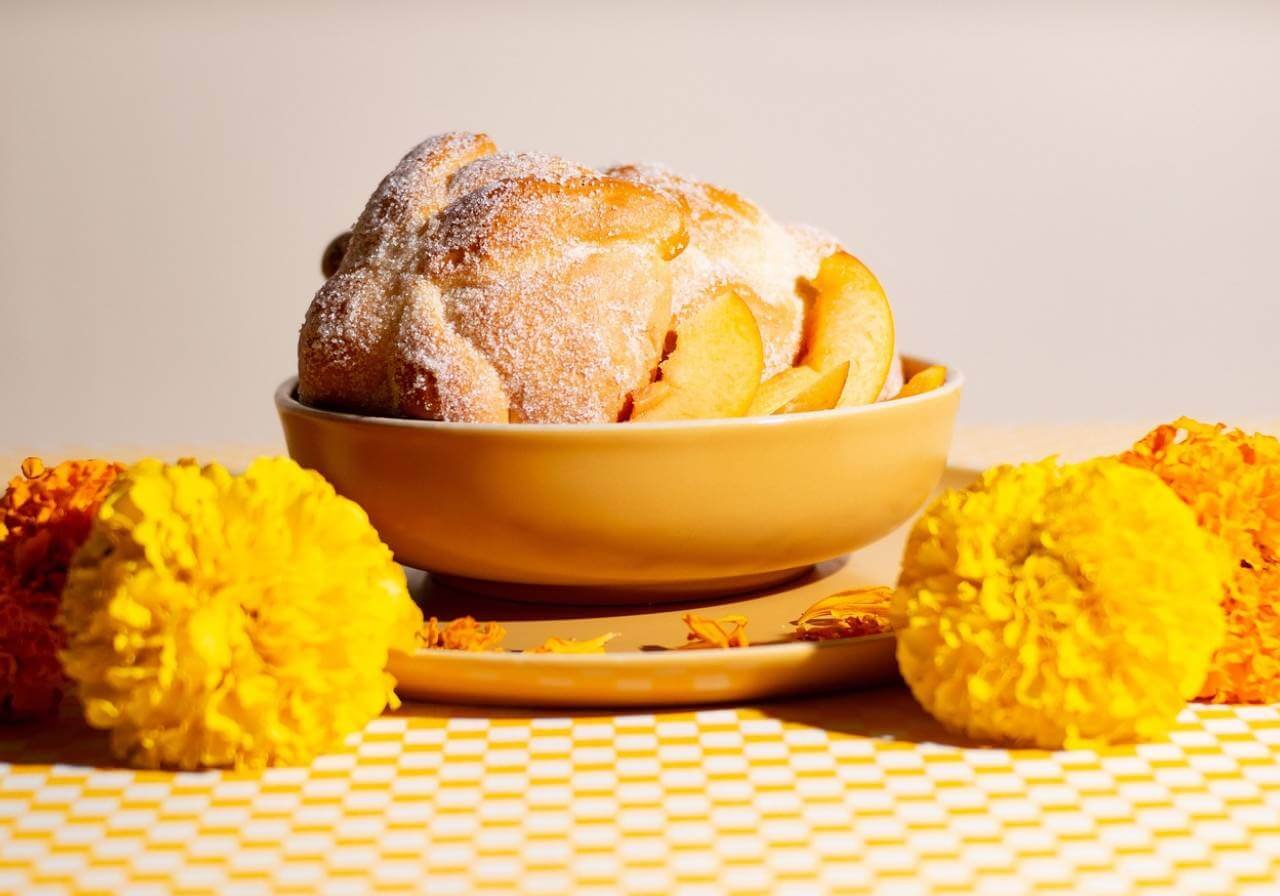
While the exact origin of this bread varies, what’s for sure is that it holds significant meaning in its shape. Some say it represents the four cardinal points, while others suggest it alludes to tears or bones of the deceased. Whatever its meaning, its taste is always impeccable.
To accompany the Day of the Dead delights, Atole, an unbeatable pre-Hispanic drink made from corn, is a must. It’s known for its thick consistency and is sweetened with piloncillo, cinnamon, honey, or just sugar.
You can say, that atole becomes a canvas of essential flavors and aromas during this season. Besides the classic version, you’ll find modern variations with flavors like strawberry, chocolate, or vanilla.
So this is the perfect option for the children’s offerings!
In Mexico, pozole is one of the most iconic and comforting dishes in Day of the Dead cuisine. Although it’s also important during the Independence Month, its presence during this season is equally special.
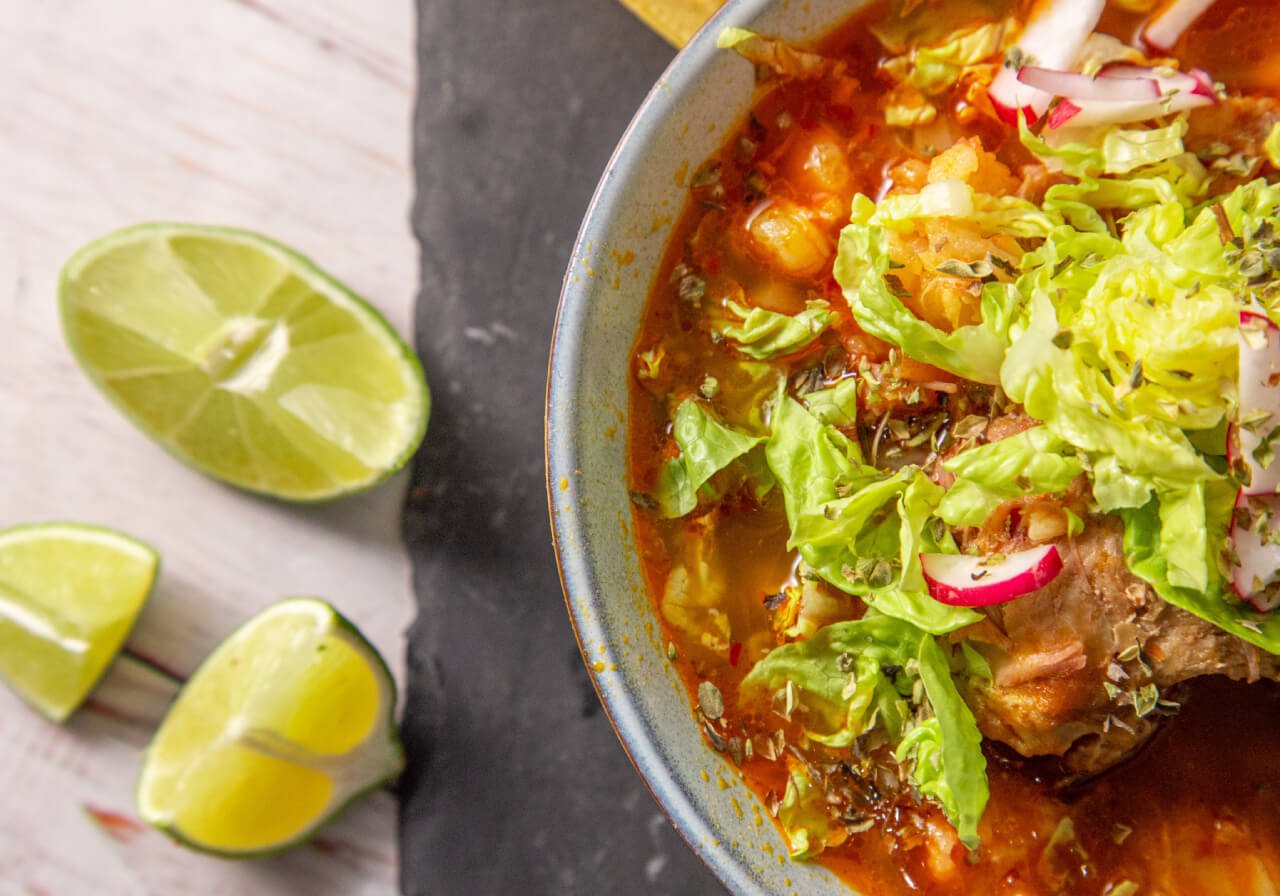
Besides its exquisite taste, pozole holds symbolic significance, primarily because it’s made from corn, a staple food in Mayan culture that represents a connection to the land and ancestral traditions.
Whether you choose to enjoy it red, green, or white, it’s a dish you’ll love!
Another essential dessert you’ll find on many altars is alfeñique sweets, mainly made from sugar and molded into popular figures like skulls, bones, angels, and other items related to the festival.
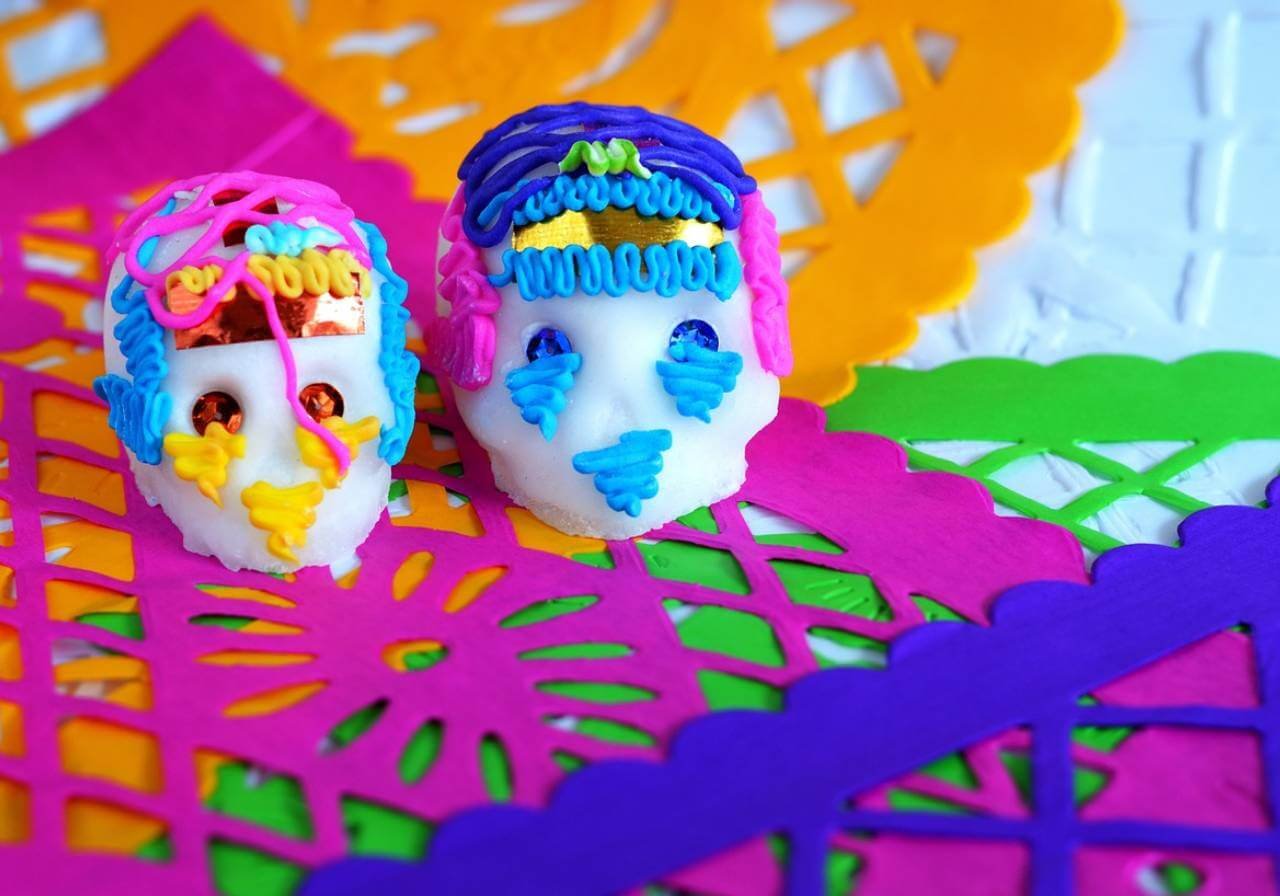
Each figure has a specific meaning, skulls symbolize death, but in a festive and non-threatening context; angels represent the protection of the deceased, while bones remind us of the transience of life.
These sweets are both artistic expressions and tributes to tradition and the memory of loved ones.
Hot chocolate has been a part of Mexico’s history since pre-Hispanic times. Cacao was highly valued by ancient civilizations like the Maya, who transformed it into a thick, bitter beverage.
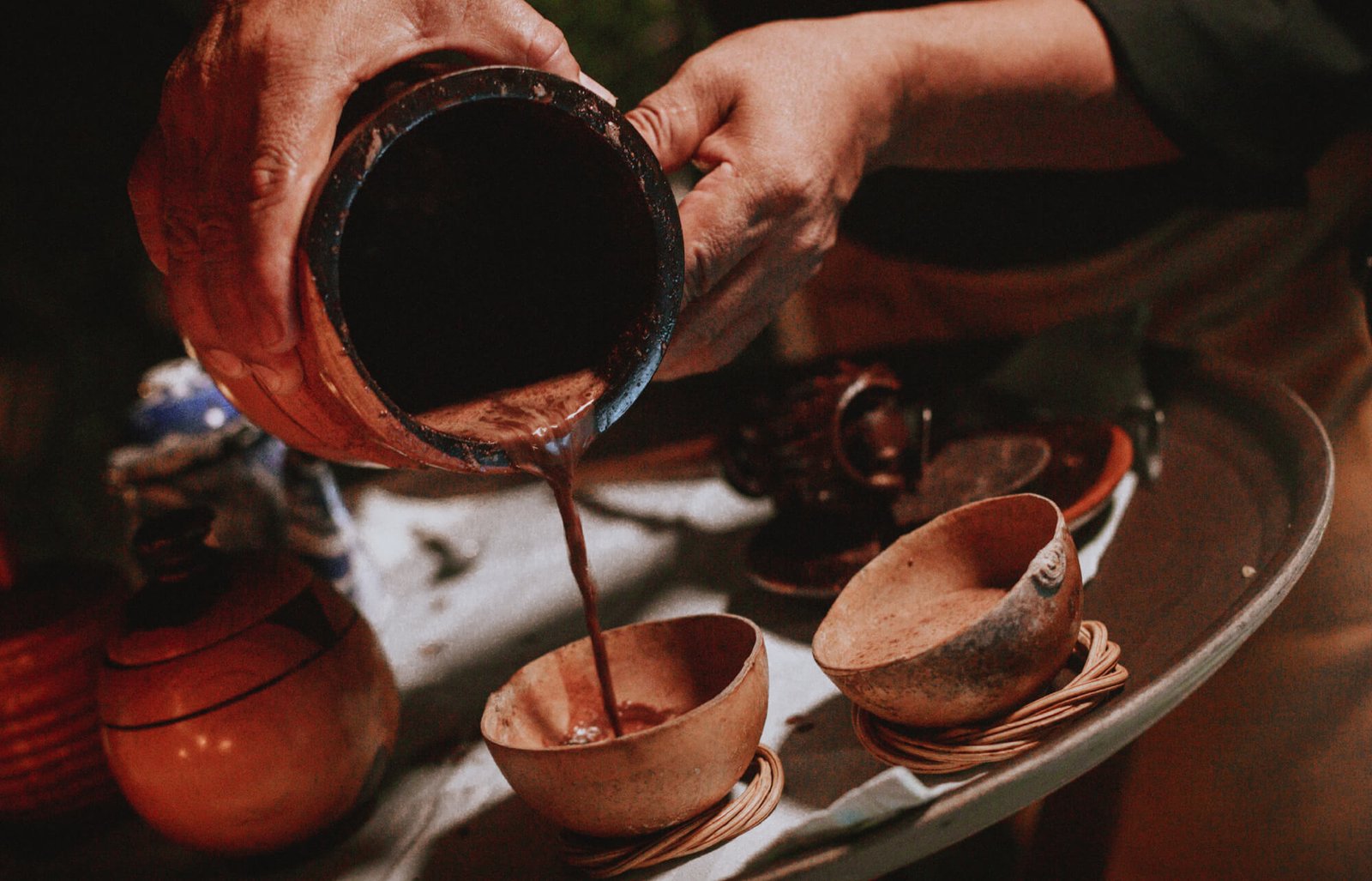
Today, hot chocolate is made with dark chocolate tablets, often sweetened with sugar and enriched with spices like cinnamon. The key to its delicious flavor lies in the technique of dissolving the chocolate in hot milk while vigorously stirring.
The result is a creamy drink with a hint of bitterness and a gently spiced aftertaste.
Among the wide range of flavors and aromas that make up Day of the Dead food, Café de Olla is a gastronomic delight that holds a special place on the offerings.
Many households place a cup of this coffee along with other symbolic elements like flowers and candles. As is it is believed that the aroma of coffee and other foods guides the souls of the deceased back to the land of the living.
Prepared with coffee, piloncillo, cinnamon, and star anise, it becomes a comforting beverage that allows families to share stories and memories of their loved ones.
Surprisingly, seasonal fruits are also an essential component of Day of the Dead food. These juicy and delicious treats play a fundamental role in this tradition-filled festival.
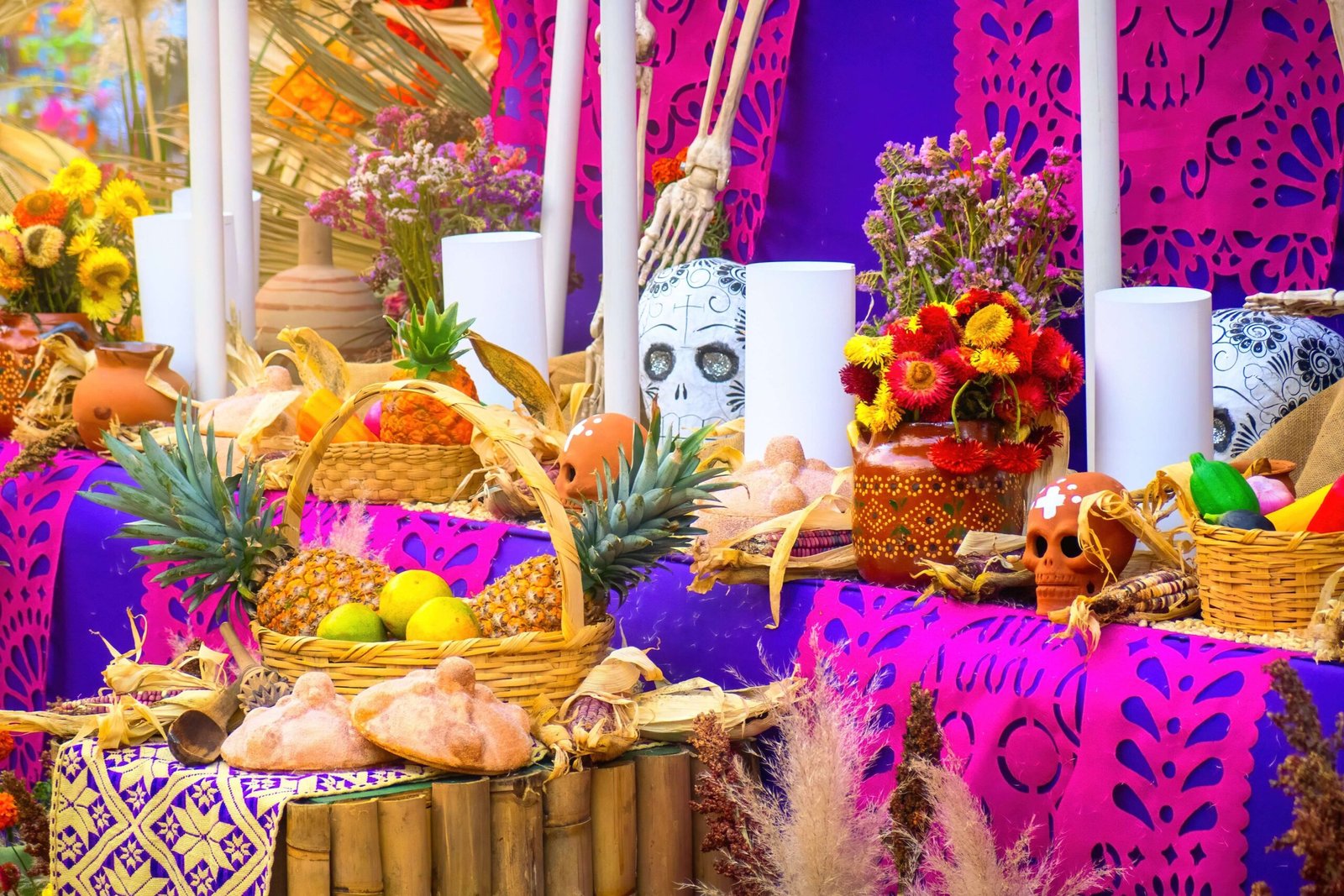
Fruits like pumpkins, oranges, mandarins, and tejocotes are popular choices and used in various preparations and decorations to add color and flavor to the celebration. As you can see, each dish and drink of Day of the Dead is much more than just food; it’s an expression of love, memory, culture, and tradition.
So, if you’re looking for an unforgettable culinary experience during the Hanal Pixán season, we encourage you to visit Pischán Restaurant, located in the heart of the Mayan city of Cobá. There, you can enjoy authentic dishes with contemporary flavors.
For more information, you can contact the direct line at 998 342 0198 or visit the website if you prefer.
Share:

Find the latest wedding food trends for 2024. 💍 From decorations to menus, get ready for an unforgettable event! ✨🍾

Explore Yucatán with our beginner’s guide! Discover the Top 10 Yucatán Foods for an unforgettable trip. 🌯🤤
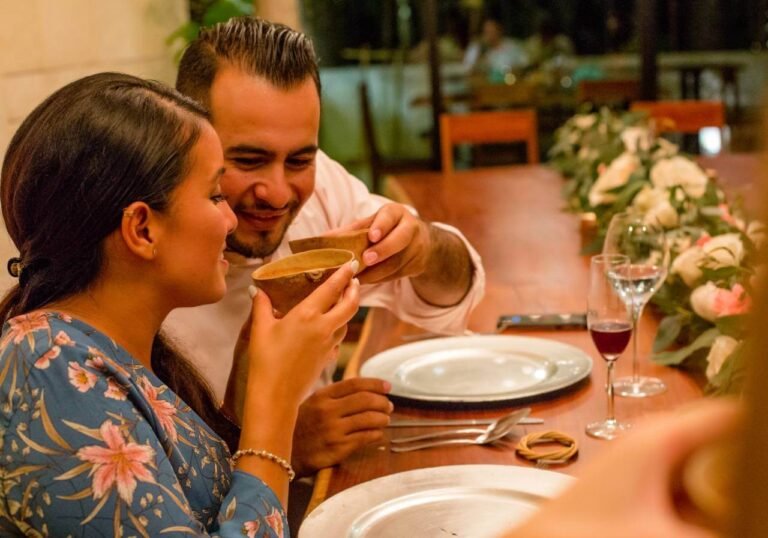
Celebrate Lent with an explosion of flavors. Discover what to eat at Semana Santa and surprise your palate 🍤🍲

LOCATED AT ALDEA COBA
